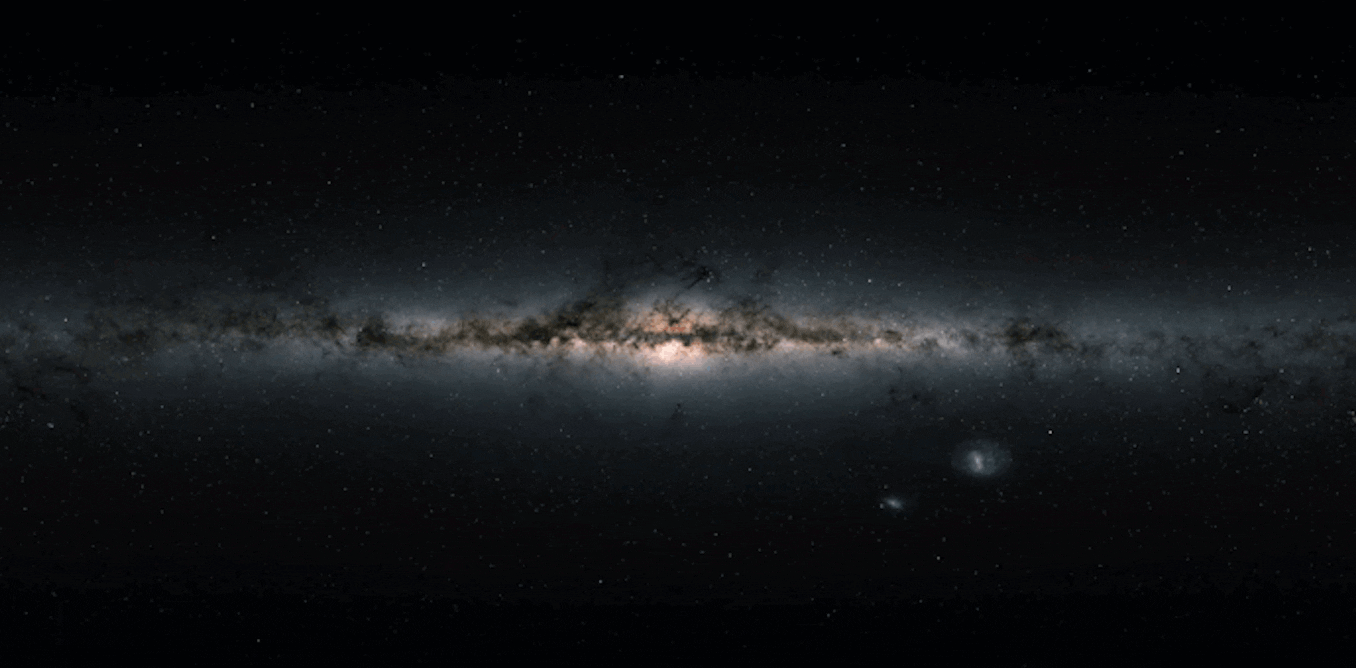If I asked you where your mass comes from, your answer might involve an extra muffin or two. However, if I ask a science enthusiast the same question, I would expect to hear that the real origin of mass is from a physical phenomenon called the Higgs field. While that claim is often seen in popular science stories, it turns out not to be true at all. Indeed, the Higgs field contributes very little to the mass of the Universe. The reality is far more interesting.
First, let’s dig into why the scientific press claims that the Higgs field gives mass to objects.
The Higgs field
The Higgs field was a theory devised in the 1960s as a kind of Band-Aid to save another theory that was popular at the time. Physicists had devised a theory that two of the known quantum forces – electromagnetism and the weak nuclear force – were actually two manifestations of a single underlying force: the electroweak force. (Electromagnetism is responsible for electricity, magnetism, light, and much of chemistry, while the weak nuclear force is responsible for certain forms of radiation.)
In much the same way we know that ice and steam are simply different forms of water, these two seemingly different forces were just different ways of looking at the same thing. There was a problem with this new and unified force — it predicted that all subatomic particles have zero mass. This claim was known to be false as early as the 1930s, so electroweak theory might have died shortly after it was born. However, a group of physicists in the mid-1960s proposed an energy field – now called the Higgs field – that gave mass to some particles but not others.
This Higgs field theory predicted the existence of a particle called the Higgs boson – often called “The God Particle” by some science reporters. The Higgs boson was discovered in 2012 by researchers working at the CERN laboratory in Europe. With the discovery of the Higgs boson, electroweak theory was validated.
It is true that the Higgs field gives mass to some subatomic particles, like, for instance, the familiar electron, as well as a class of particles called “quarks” that are found inside protons and neutrons. Because of this truth, reporters and science enthusiasts say that the Higgs field gives us mass.
What gives us mass?
However, despite the success of Higgs theory, this claim turns out to be not true. We can illustrate this by asking where the mass of a person weighing 200 pounds comes from. If you ask a chemist, they will say that the person’s mass comes from the molecules of which they are composed. And, if you weigh those molecules, you do find they weigh 200 pounds.
Digging more deeply, we can ask: What is the mass of the atoms making up those molecules? When you weigh them, you again find 200 pounds.
Inside atoms are the protons and neutrons found at the atom’s center, as well as a cloud of electrons swirling around the periphery. The protons and neutrons weigh about the same, while the electrons are lightweights – weighing in at about 0.05% the mass of protons and neutrons. So, we can ignore the electrons and concentrate on the protons and neutrons. When you add their masses, you get 199.9 pounds (with the 0.1 pounds in the electrons).
To this point, it would appear that a person’s mass is found in the subatomic particles of which they are composed; however, this is where the Universe throws us a curve ball. Each proton and neutron contains three smaller particles called quarks. So, one would expect that if you added up the mass of the quarks, you’d get the now-boring number 200 pounds.
But that’s not what you find. If you add up all of the mass of all the quarks in our 200-pound person, you find that the quarks weigh about 4 pounds.
So, where does the other 196 pounds come from? That’s where things get interesting. The answer is found, as is so often true, in Einstein’s famous equation E = mc2. This equation says that energy and mass are equivalent. How does this help?
It turns out that inside each proton and neutron, the quarks are moving at very high speeds; indeed, these speeds can approach the speed of light. Very high speed means very high energy, and, according to Einstein, very high energy means very high mass. However, there’s more to the story.
Protons and neutrons are very tiny balls, about a quadrillionth of a meter across. If protons are composed of outrageously fast quarks held inside that tiny volume, there must be equally outrageously strong forces holding them together. Strong forces can also mean high energy, just like a very taut bow has more energy than one with a loose string.
You can add up the motion energy and containment energy of the quarks inside protons and neutrons and, when you do that, you find that a person’s mass is made not of “stuff” in the way we normally think about it, but rather our mass is made of energy. In fact, all matter is made of energy. In a (very loosely true) way, the pseudoscientific woo-woo crowd is right: We are all energy.
Now, one can go too far with the pseudoscience claims, and that often happens. But the idea that our mass is nothing more than the frantic motion of tiny subatomic particles, held together by unimaginable forces, gives us a very different way of thinking about matter and energy. Once again, science has taught us that reality is far stranger than we imagine.
This article You’re made of energy: The strange truth about where mass comes from is featured on Big Think.

The post “You’re made of energy: The strange truth about where mass comes from” by Don Lincoln was published on 11/25/2024 by bigthink.com





































Leave a Reply